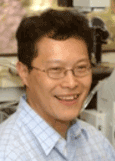Dr. Hsiai’s group developed the first quantitative, nanotechnological approach to analyzing unstable atherosclerotic plaque dynamics under complex flow conditions. He introduced microelectromechanical systems (MEMS) and nanoscale sensors for direct, real-time quantification of mechanical stress and oxidant stress simultaneously with markers of atherogenesis in vascular endothelial cells.
Prior studies of fluid shear stress in the vasculature required major simplifying approximations instead of direct measurements. Dr. Hsiai’s nanotechnology approaches have applications in broad areas of medicine and physiology including angiogenesis, tumor growth, leukocyte adhesion, and endothelial cell mechanotransduction. His vision is to establish early localization of arterial sites likely to develop high-risk plaque characteristics and to stratify patients for selective interventions. Dr. Hsiai’s work serves as a nucleation site for a new, multidisciplinary Cardiovascular Engineering Research Laboratory and Light-Sheet Imaging at the University of California, Los Angeles, involving the School of Medicine, Engineering, California NanoSystems Institute, Pharmacology, Preventive Medicine, Atherosclerosis Research Unit, Cardiovascular Research Laboratory, and the UCLA Clinical and Translational Science Institute’s Cardiovascular Theme Team Science Program.
